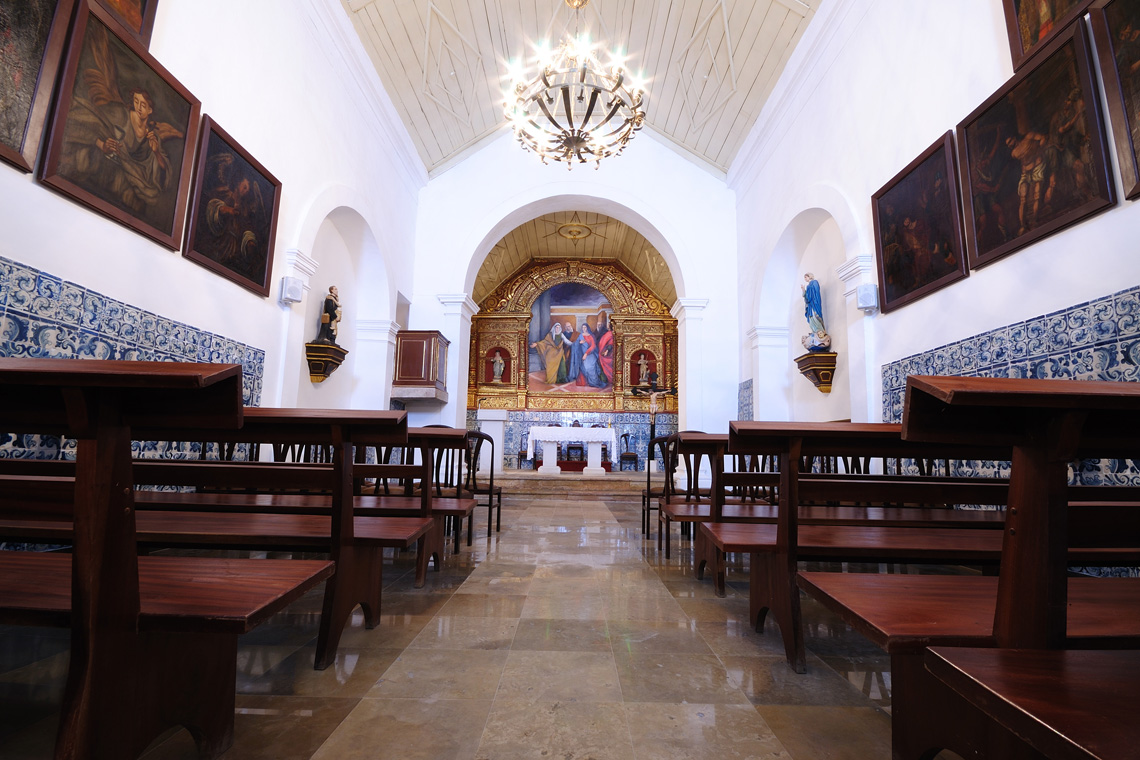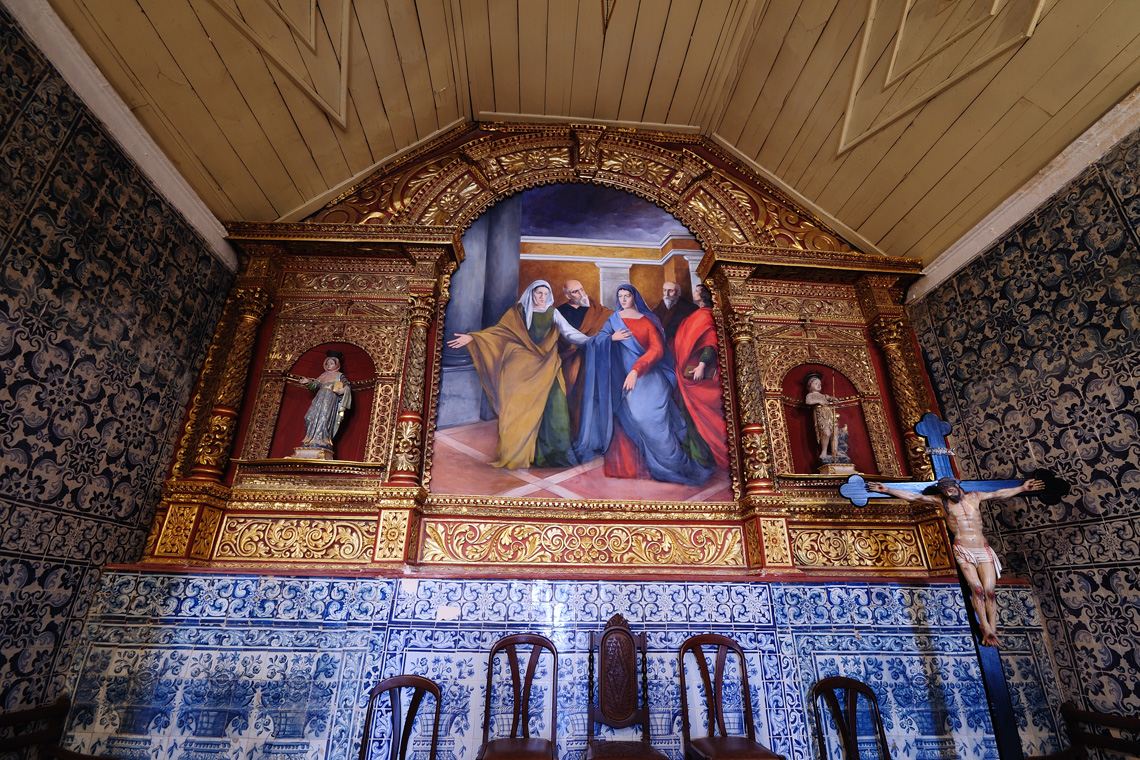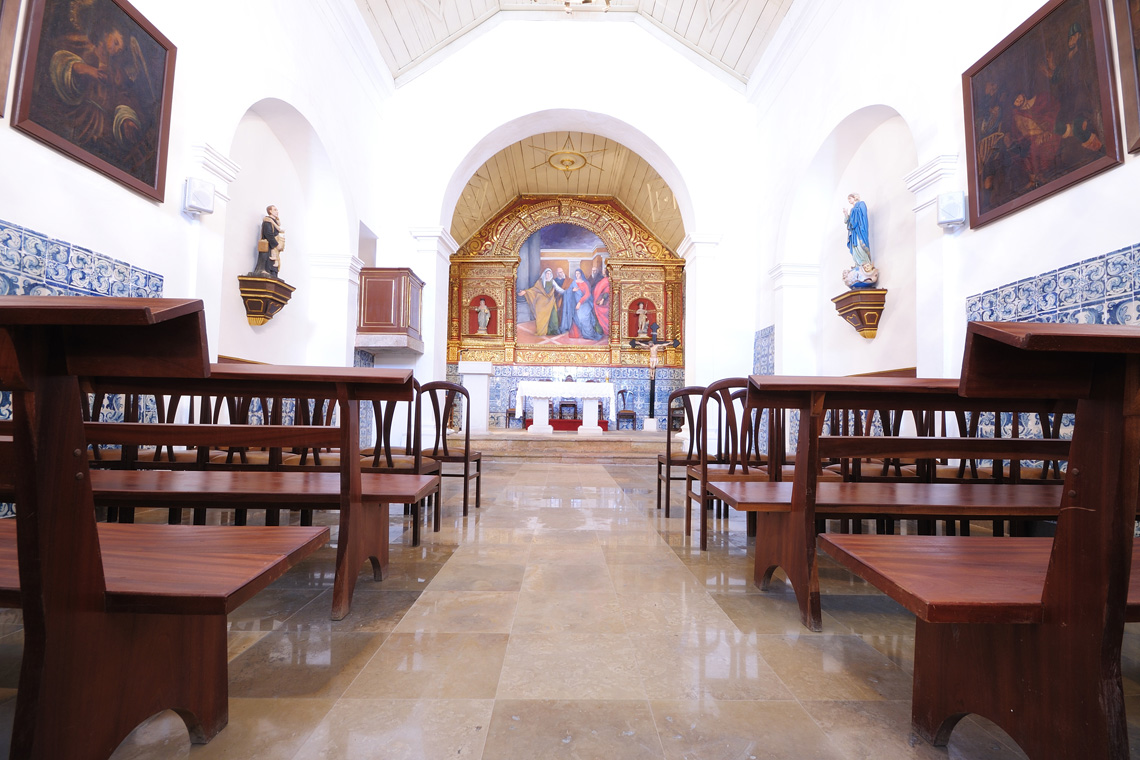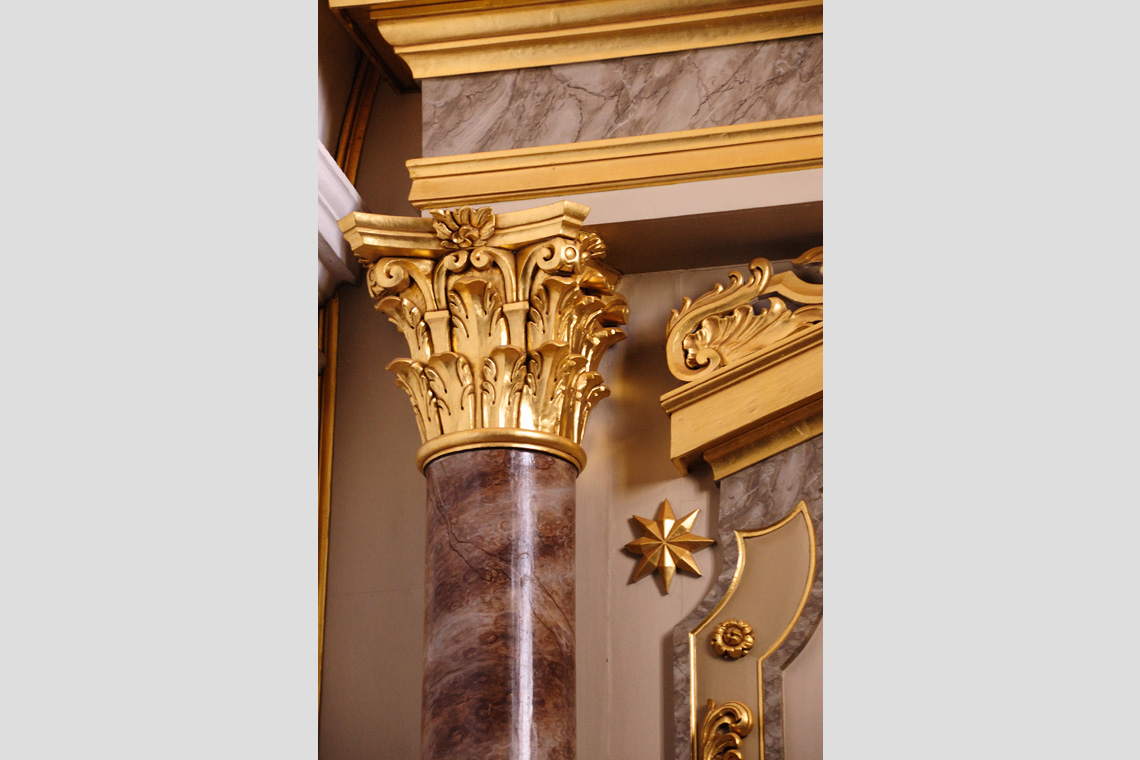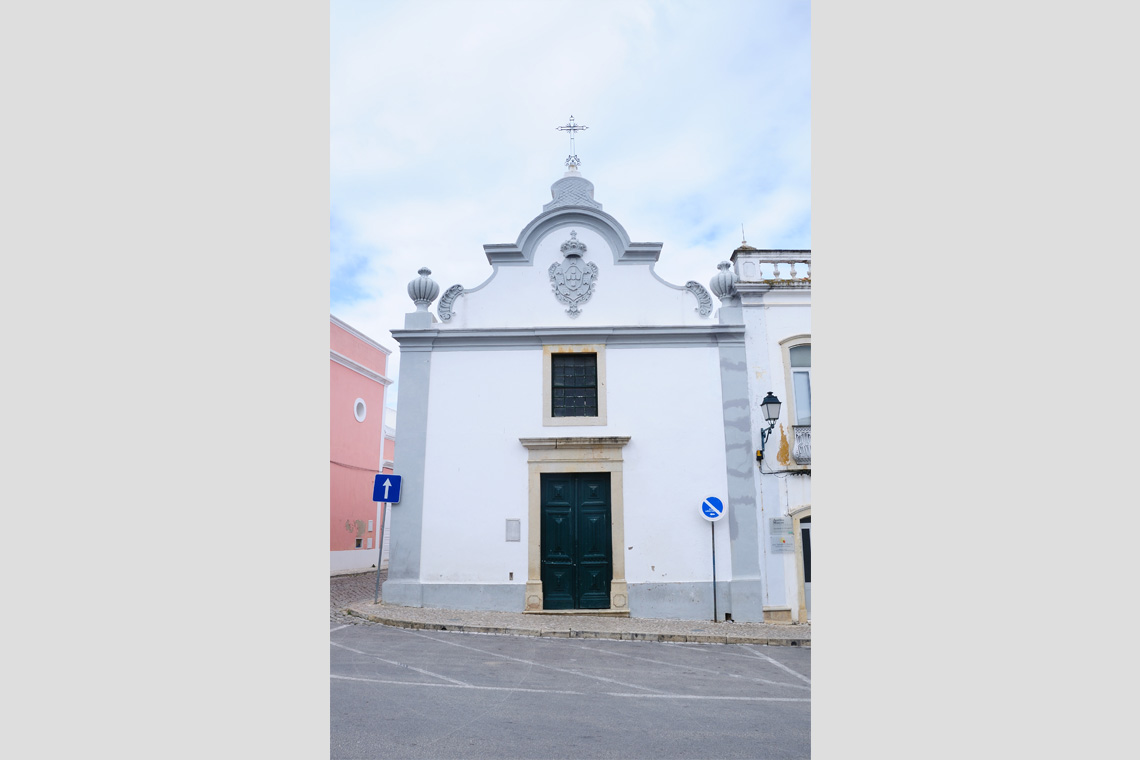10. Igreja da Misericórdia de Lagoa
Mercy Church of Lagoa
Mercy Church of Lagoa
Cronologia: Idade Moderna (séc. XVI-XVIII)
Chronology: Modern Age (16th-18th century)
Chronology: Modern Age (16th-18th century)
Edificada no século XVI, a Igreja da Santa Casa da Misericórdia de Lagoa, ou de Nossa Senhora da Visitação, encontra-se implantada no coração da malha urbana da cidade. A frontaria, reconstruída após os parcos estragos provocados pelo terramoto de 1755, exibe um frontão recortado, enquadrado por dois volumosos pináculos, com escudo encimado por coroa real em relevo ao centro, que substituiu o anterior, mais ornamentado. O seu interior, de planta retangular e cobertura em madeira e telhas, no lugar da primitiva abóboda, é decorado por painéis de azulejos do séc. XVII e um friso de açafates floridos enquadrados por folhagem barroca. Na capela-mor pode-se observar um primoroso retábulo em talha dourada, obra dos finais do séc. XVII, onde se enquadra uma belíssima pintura da Visitação, da autoria de Pedro Girão de finais do séc. XX. De destacar uma imagem do Senhor Cruxificado e ainda as imagens do séc. XVIII, colocadas em nichos pintados a vermelho, de São João Batista e de Santa Isabel, Rainha de Portugal. De referir, entre os aspetos mais curiosos ligados à Misericórdia, a existência de uma antiga azinhaga, o primitivo albergue ou hospital e o cemitério da irmandade.
Built in the 16th century, Igreja da Santa Casa da Misericórdia de Lagoa (Mercy Church of Lagoa), or Nossa Senhora da Visitação (Our Lady of the Visitation), is in the urban centre of the city. The frontage, rebuilt after the damages of the earthquake of 1755, presents a cut-away pediment framed with two large pinnacles and a shield with an embossed royal crown in the centre, which has replaced the former, which was more ornamented. The interior, with a rectangular plant and covered in wood and tile, replacing the primitive dome, is decorated with ceramic tiles from the 17th century and a frieze of colourful açafates framed by baroque foliage. The main chapel has an altarpiece in gilded wood from the late 17th century, where there is a beautiful painting of Visitação, from Pedro Girão, from the late 20th century. Worthy of note is the painting of the Crucified Lord and the paintings of the 18th century, gathered in niches painted in red, of Saint John the Baptist and Saint Elizabeth, Queen of Portugal. Among the most curious aspects connected to this Church is the existence of an old alleyway, the primitive shelter or the hospital and the sisterhood cemetery.
